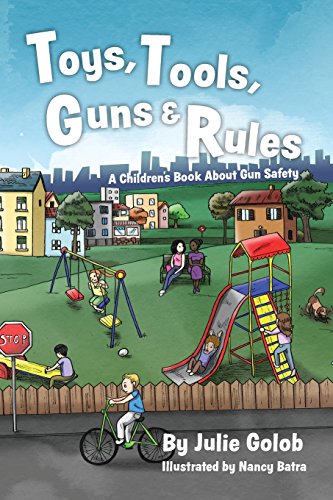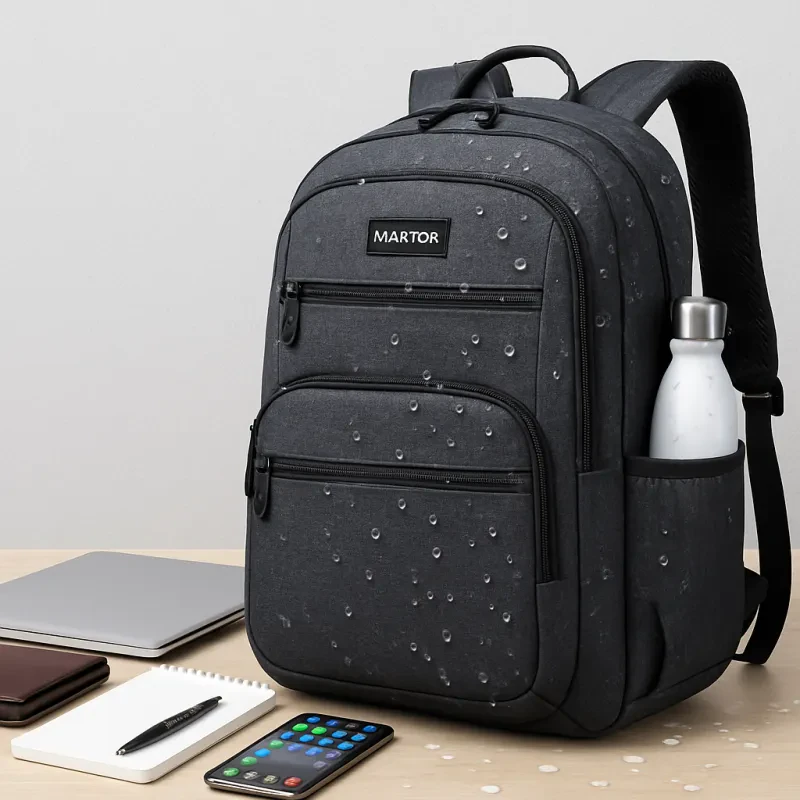Introduction to School Safety
School safety has become a paramount concern for educational institutions, as the prevalence of weapons in various environments continues to pose significant risks. The physical well-being of students, staff, and visitors has become a critical issue that demands immediate attention. Over recent years, numerous incidents involving firearms and other weapons on school campuses have sparked a widespread dialogue on the effectiveness of current safety protocols and the necessity for innovative strategies aimed at prevention and detection.
With educational environments being sanctuaries for learning and personal development, the safety of these spaces must be prioritized. As communities work towards fostering safe atmospheres, schools play an instrumental role in not just educating but also preparing young individuals to navigate a world that may sometimes be fraught with danger. A major component of this is the development of effective measures to deter weapons from entering school premises. Schools must proactively address these concerns to create an environment conducive to education and growth.
The increasing incidences of weapon-related events have underscored the need for comprehensive safety measures, including both technological innovations and procedural advancements. While traditional security measures like surveillance systems and resource officers have played a key role in improving school safety, the evolving landscape of threats prompts a reevaluation of these strategies. As we explore the latest tools and methodologies for the detection and prevention of weapons in educational settings, it is essential to also consider the implications these innovations hold for enhancing the overall safety culture within our schools.
$9.99
4.82 out of 5 starsGun Safety for Kids: An Engaging Resource
Empower young learners with essential knowledge and skills for safe firearm handling
Product information
Product Review Score
Product links
Legal Framework and Policy Changes
The legal landscape governing weapon detection in schools is shaped by a multitude of federal and state laws designed to enhance security and ensure safe learning environments. At the federal level, legislation such as the Gun-Free Schools Act mandates that schools maintain a zero-tolerance policy towards weapons on campuses. This regulation, while critical, often places the onus on local districts to develop specific policies that address weapon detection and prevention. Consequently, states have responded by enacting complementary laws that dictate how schools should implement security measures, invest in technology, and generate comprehensive safety plans. These adaptations aim to align with legal requirements while addressing community apprehensions regarding safety.
Furthermore, schools have begun to adopt formal policies that reflect not only compliance with laws but also the values and expectations of their communities. This often involves increased training for school personnel on recognizing potential threats and handling situations involving weapons. Collaboration between schools, local law enforcement, and mental health professionals is encouraged to devise proactive strategies that extend beyond mere detection of weapons on campuses. This multifaceted approach aims to cultivate a safe educational environment while balancing the rights of students and staff.
In response to community input, many schools have also integrated advanced technology solutions to enhance weapon detection capabilities. This includes using metal detectors, surveillance systems, and artificial intelligence-driven monitoring systems that can identify unusual behavior in real-time. These technological advancements are further supported by policies that dictate how data from these systems will be managed and utilized, ensuring compliance with laws regarding privacy and data security. Ultimately, the evolution of school policies in light of legal frameworks is crucial in creating a safer environment for students, staff, and the broader community.
Technological Innovations in Weapon Detection
In recent years, educational institutions have increasingly turned to advanced technologies to bolster campus safety and prevent incidents involving weapons. Among the most notable innovations are metal detectors, surveillance cameras equipped with artificial intelligence (AI), and various other advanced safety tools. These technologies aim to create a safer educational environment by enhancing the ability to identify potential threats before they escalate.
Metal detectors are commonly deployed at school entrances, providing immediate screening for firearms or other metallic weapons. Their functionality is straightforward; individuals passing through the detectors trigger alarms if metal objects are detected. While effective in many scenarios, schools face challenges related to the speed of screening, potential delays in student movement, and concerns over privacy. Despite these issues, metal detectors remain a primary tool in the weapon detection arsenal.
Surveillance cameras with AI capabilities represent another significant step forward in weapon detection technology. These systems utilize advanced algorithms to analyze video feeds in real-time, allowing for the identification of suspicious behavior or the presence of weapons. For instance, AI can learn to recognize the shape of guns and alert security personnel immediately upon detection. This proactive measure not only aids in preventing potential threats but can also serve to reassure students and staff about their safety on campus.
Beyond metal detectors and AI-driven surveillance, schools are increasingly adopting additional technologies, such as gunshot detection systems and environmental sensors, which can provide real-time alerts. These solutions are designed to complement existing safety measures and offer a multi-layered approach to campus security. Nonetheless, challenges remain in terms of funding, training personnel, and integrating new technologies with existing infrastructure. As innovations in weapon detection continue to evolve, schools must carefully assess not only their effectiveness but also their implications for safety, privacy, and overall security culture.
Preventive Strategies and Training Programs
In the quest to enhance school safety, implementing preventive strategies and training programs is essential. These initiatives aim not only to detect potential threats but also to cultivate a culture of safety within the educational environment. Comprehensive training programs for both staff and students play a pivotal role in this regard. It is imperative to equip educators with the necessary skills to identify early warning signs of violence and to respond appropriately in crisis situations. Workshops focused on conflict resolution and behavioral assessment can significantly enhance staff preparedness.
Moreover, training programs tailored for students foster essential skills such as peer mediation, emotional intelligence, and problem-solving. Encouraging students to engage in these programs can empower them, providing the tools necessary to navigate interpersonal conflicts without resorting to violence. Through role-playing scenarios and interactive learning modules, students can gain invaluable experiences that promote understanding and acceptance among their peers. This proactive approach not only diminishes the likelihood of violent incidents but also nurtures a supportive school community.
Community involvement also enhances the effectiveness of these initiatives. Engaging parents, local law enforcement, and community organizations can create a unified front against potential threats. Collaborative workshops and informational sessions can help reinforce the importance of a safe educational environment, while also establishing a network of support. Furthermore, community-based programs can facilitate communication between schools and families, ensuring that concerns are addressed swiftly and preventively. By intertwining resources and expertise from various sectors, schools can create a comprehensive safety framework that not only responds to existing issues but also focuses on preventing them in the first place.
Supporting Mental Health and Well-Being
The relationship between mental health support and the prevention of weapons in schools is increasingly recognized as a critical aspect of enhancing campus safety. Schools are beginning to understand that addressing mental health issues among students not only contributes to their overall well-being but also plays a vital role in curbing potential violent behaviors. By integrating comprehensive mental health resources, educational institutions can target the root causes of aggression and provide a supportive environment for all students.
To achieve this, many schools are implementing a range of counseling services and mental health programs. These initiatives are designed to foster emotional intelligence, resilience, and coping strategies among students. For example, the introduction of school psychologists and trained counselors ensures that students have accessible professional support. Furthermore, regular workshops and training sessions focused on mental health awareness promote understanding and encourage students to seek help when needed. This proactive approach helps to create a climate in which students feel valued and understood, reducing the likelihood of resorting to violence.
Moreover, peer support systems are being established to empower students to assist each other. Such programs enable students to foster positive relationships, enhancing community ties and reducing feelings of isolation. This connection is essential, as studies indicate that a sense of belonging can diminish hostile behavior and increase overall mental well-being. Additionally, integrating mental health education into the curriculum equips students with essential skills to identify their own emotional needs and those of their peers.
In conclusion, the incorporation of mental health resources and support networks in schools is a significant innovation in weapon prevention strategies. By prioritizing the mental health and well-being of students, educational institutions can cultivate a peaceful and supportive learning environment conducive to academic achievement and personal growth.
Collaboration with Law Enforcement Agencies
In recent years, the collaboration between schools and local law enforcement agencies has become increasingly vital in enhancing safety on campuses. These partnerships not only aim to prevent incidents involving weapons but also foster a greater sense of security among students and staff. One prominent aspect of this collaboration is the presence of School Resource Officers (SROs). These trained law enforcement professionals serve on school campuses, acting as a bridge between law enforcement and the school community. SROs are responsible for a range of duties, including providing security, building relationships with students, and offering education on law-related topics.
The integration of SROs in schools has proven beneficial in not just responding to incidents, but also in proactively preventing potential threats. Their familiarity with the school environment allows them to identify suspicious activities or behaviors before they escalate. Additionally, the presence of SROs contributes to a more open communication channel between students and law enforcement, enabling students to feel comfortable reporting any concerning situations they may encounter.
Moreover, collaborative efforts extend beyond having personnel on-site. Schools and law enforcement often conduct joint safety drills, which prepare students and staff for various emergency scenarios, including potential weapon-related incidents. These drills serve as practical training exercises that enhance the readiness of both students and responders. They also create a culture of safety within the school, reinforcing the message that preparedness is a shared responsibility.
Effective communication between schools and law enforcement agencies is essential. Regular meetings and updates ensure all parties remain informed about safety protocols and any emerging threats. In addition, proactive outreach initiatives enable law enforcement to engage with students through educational programs, further reinforcing the collaborative spirit. By working together, schools and local law enforcement can create a safer environment, minimizing the risks associated with weapons on campus.
Parental and Community Involvement
In an era where school safety is a paramount concern, parental and community involvement plays an instrumental role in preventing weapons from entering school campuses. Engaging families in discussions about safety protocols and preventive measures fosters a collaborative atmosphere where the importance of vigilance and proactive behaviors is emphasized. Recognizing that a unified approach can significantly enhance safety, many schools are initiating various programs aimed at involving parents and community members.
Workshops are one avenue through which schools educate parents about the existing safety measures and strategies for detecting and reporting potential threats. These interactive sessions not only inform but also empower parents to recognize warning signs and take appropriate action. Furthermore, community forums provide a platform for dialogue, enabling families to voice concerns and share experiences regarding school safety. These discussions often lead to actionable insights that schools can implement to bolster security protocols and ensure a calming educational environment.
Outreach programs targeting local organizations and community leaders are vital as well. Schools that collaborate with police departments, mental health professionals, and community groups create a resourceful network aimed at combatting violence effectively. Such partnerships extend the responsibility of weapon detection and prevention beyond the school’s gates and involve the community as a whole. By fostering a culture of mutual trust and open communication, schools can address potential threats more effectively and establish a community-centric approach to safety.
Ultimately, the collective efforts of parents, community organizations, and schools contribute to a significant reduction in the likelihood of weapons on campus. By working together, they can cultivate safe spaces for children, ensuring educational institutions remain conducive to learning and growth.
Challenges and Limitations of Current Approaches
The implementation of weapon detection and prevention measures in schools faces numerous challenges and limitations that may hinder its effectiveness. One of the most significant issues is the allocation of funding. Many schools operate on tight budgets, and the costs associated with advanced detection technologies can be prohibitive. Even when funds are available, competing financial priorities often take precedence over safety measures, leaving schools unable to invest in the necessary equipment, training, and maintenance required for effective implementation.
In addition to financial constraints, privacy concerns pose another hurdle in the adoption of weapon detection systems. Effective surveillance technologies, while beneficial for ensuring safety, can lead to invasive monitoring practices. This raises ethical questions about student privacy and civil liberties. Parents and advocacy groups may express apprehensions about how data is collected, stored, and used, potentially stalling the acceptance of proposed safety measures. Schools must therefore navigate the fine line between enhancing security and respecting the rights of students and their families.
Furthermore, there is the potential for creating a climate of fear among students. Implementing rigorous weapon detection measures might inadvertently suggest that the school environment is unsafe, which could lead to increased anxiety and distress among students. This psychological impact, if not carefully managed, can detract from the primary educational mission of schools and contribute to an atmosphere of suspicion rather than safety. Hence, while the intention behind these measures is to protect students, the unintended consequences must be acknowledged and addressed proactively.
In summary, while significant advancements have been made in school security technology, the challenges related to funding, privacy, and student wellbeing continue to complicate their implementation and effectiveness. Addressing these limitations is crucial for developing a comprehensive approach to enhance safety on school campuses.
Future Trends in School Safety
The landscape of school safety is evolving rapidly, driven by advancements in technology, changing societal norms, and an increasing focus on mental health. One significant area of development involves the integration of artificial intelligence (AI) into security protocols. AI-powered surveillance systems can analyze real-time data, detect anomalies, and even predict potential threats, providing educators and security personnel with timely alerts. These technologies may include facial recognition and behavior analysis, streamlining the process of identifying individuals who may pose a risk before any incident occurs.
Moreover, innovations in weapon detection are becoming more sophisticated and less invasive. For instance, advanced sensors capable of identifying specific materials used in firearms are being tested in schools. Such technologies can be integrated into existing infrastructure without the need for extensive renovations, allowing schools to maintain a welcoming environment while ensuring safety. The potential for drone surveillance in monitoring school grounds is also being explored, providing a mobile, elevated perspective that can enhance security oversight.
Legislative and policy frameworks surrounding school safety are likely to undergo transformations as well. Increased dialogues centered around the allocation of funds for safety measures indicate a shift in prioritizing mental health resources, training for staff, and community involvement. Schools might adopt comprehensive approaches that not only emphasize physical security but also cultivate an environment that supports the emotional well-being of students. The need for collaboration among educators, law enforcement, and mental health professionals will become imperative in developing these multifaceted safety strategies.
As societal views on violence in schools continue to shift, comprehensive policies that incorporate both preventive measures and responsive strategies will likely shape the future of school safety. Engaging parents, students, and local communities in creating these frameworks will ensure that the initiatives adopted resonate with those they are designed to protect, ultimately fostering a safer academic environment.








